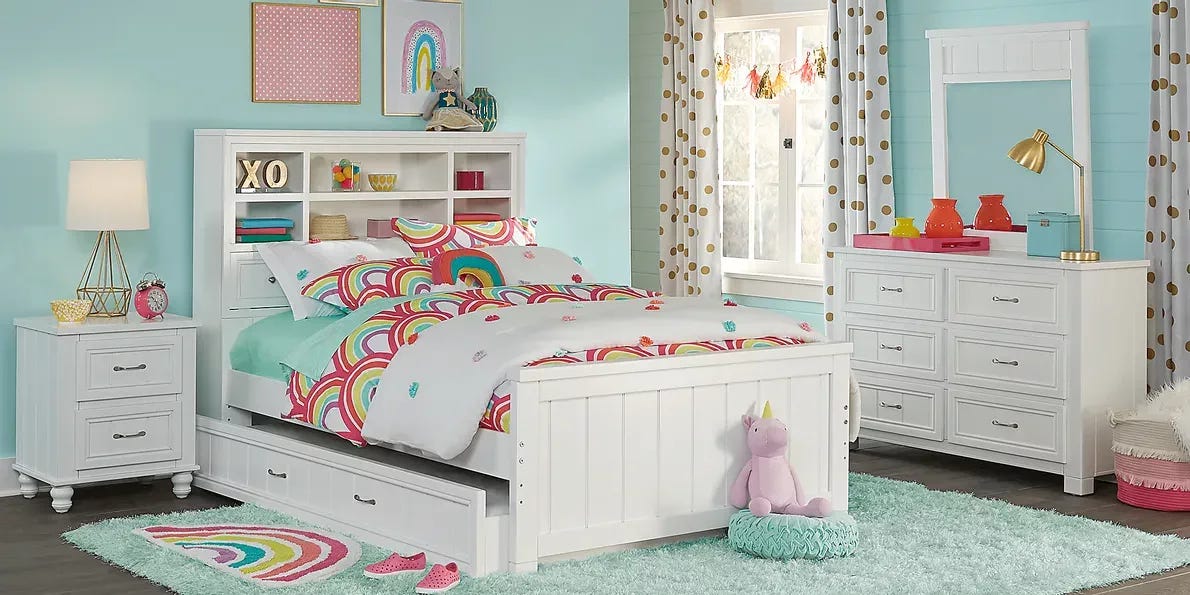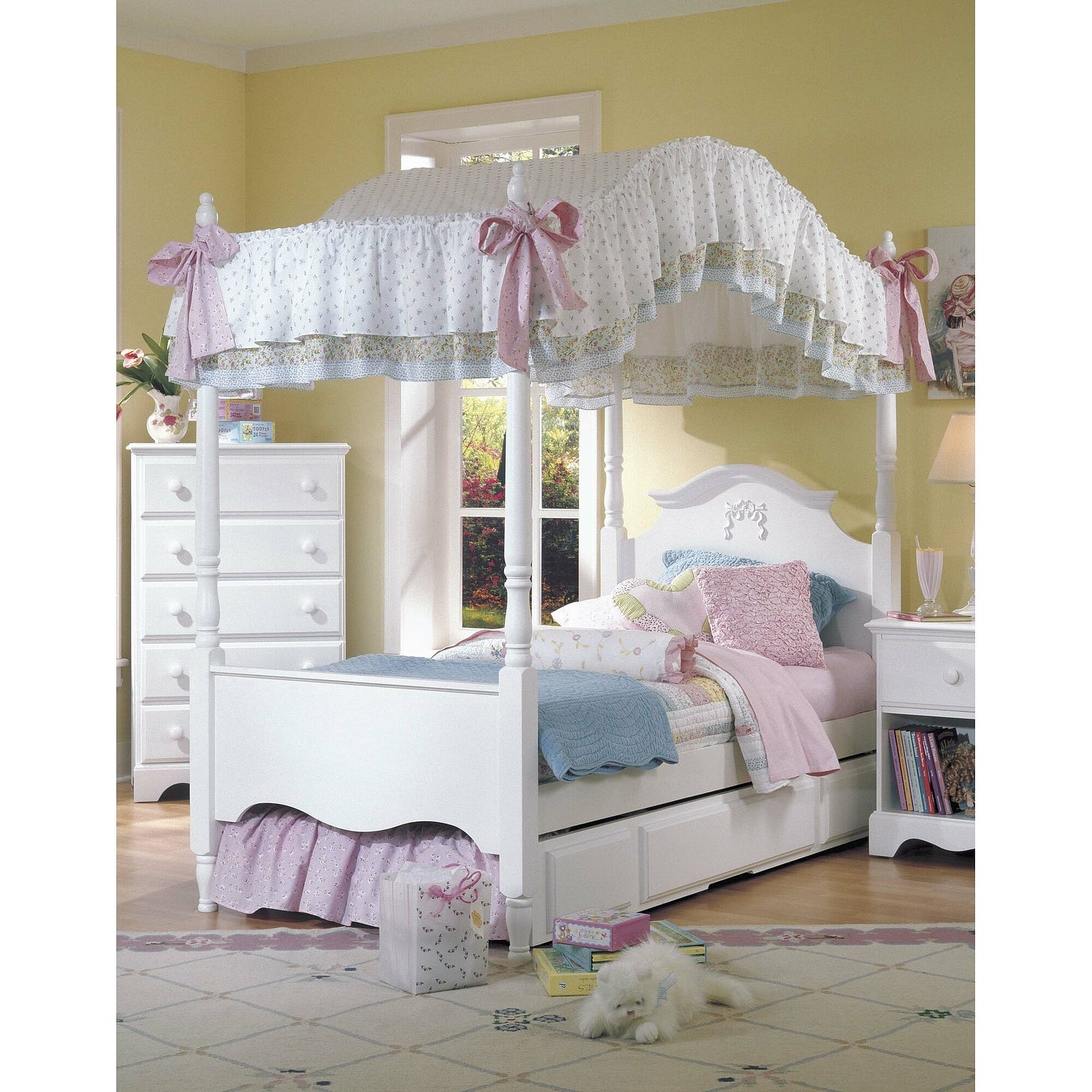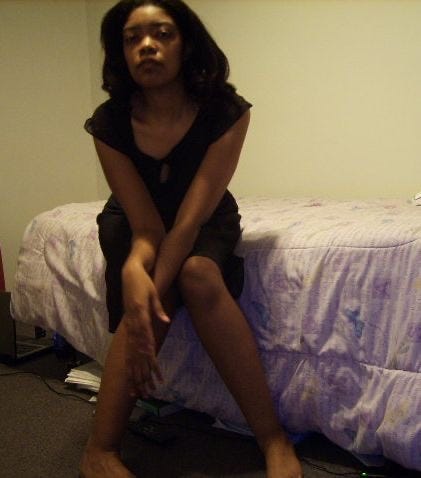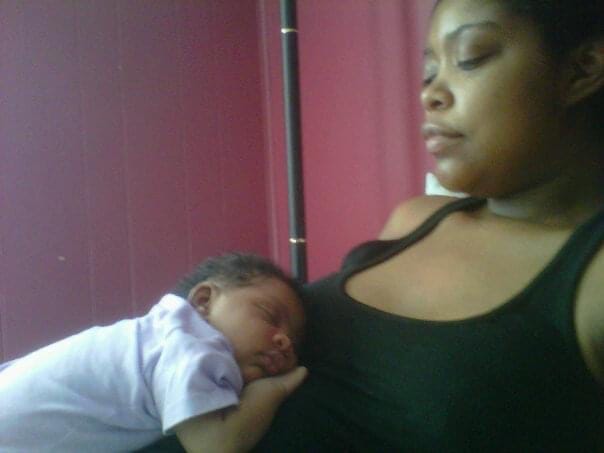
I wonder how much thought we give to them, really, these soft rectangular landings we lie in every night. When we are born into households where beds are a foregone conclusion, we do not need to contemplate their presence. We’ve no reason to consider how they got there or what they may have cost. We do not understand them as amenities deserving of our gratitude.
But we are not all born into households where we have our own beds. Some share one with their parents, with multiple siblings, a grandparent. Some move from bassinet to sofa, folding a fitted sheet before school every morning so their slumbering place can serve its daytime purpose. Others are pallet people, piling blankets to protect their bodies from an unforgiving floor. Some sleep outdoors or in cars, at shelters, on cots too interchangeable to ever be claimed.
A bed is a luxury that only feels like one when you’ve lived without it, a privilege it only occurs to you to acknowledge when you’ve watched someone struggle to attain it.
For many, it is simply a matter of mattresses—either with box spring and lifted frame or stacked low on a floor. Beds, the kind with boards at head and foot, trundles underneath, posters at the four corners, canopies and drapes, can be aspirational at best.
I grew up, mostly, with mattresses. Twin-sized, specifically, until I was in high school, I think.
But when I was in fourth grade, when we moved to Rockdale Gardens, the apartment complex directly across the street from my new elementary school, Scotts Branch, Nana bought me a bed.
It had a headboard and footboard, tall white posters, a pink ruffled canopy with delicate white polka dots dappling the fabric. It was deliciously girly, the first and most distinct piece of furniture I ever felt like I owned. Whenever anyone walked into my bedroom, that canopy bed announced itself: fanciful, feminine, mine. That was the year I got my own dressers, too. Matching wooden white ones, trimmed in the same elegant lines as the boards of the bed.
I can’t remember much about sleeping in my canopy bed—it’s been over 30 years—but I remember how it felt to have one, how different it was to sleep on something intended for a little girl (for me!), something with style and personality, something it would’ve been easy to mistake as magical. Especially after I awoke one morning to the sight and sound of birds singing on my windowsill, like I was a bonafide Disney heroine.
I slept in that bed as it was originally intended, with its canopy and ruffle intact, for the full two years we spent at Rockdale Gardens. The mattress and frame came with us to our next apartment, but the bed was never fully assembled again. Sometime between the end of fifth grade and high school, I lost the dressers, too. Maybe I looked like I was getting too old for them. Maybe no one bothered to reassemble them once I started middle school because I didn’t seem interested enough in being a girl who still valued frilliness and magic anymore.
In high school, I had a queen. A worn mattress and box spring handed down to me from my mother and her husband. It wasn’t comfortable even when I first inherited it; I don’t think they were its first owners, either. It had the sunken, sighing feel of an ancient and overworked apparatus, a piece whose better days were many moons behind it. I could feel the springs, rigid and jutting, every time I slept, as though I was being elbowed by the bed rather cushioned in it.
When I had particularly painful periods, I’d spend full days writhing with nearly unbearable cramps, trying to find just the right position to earn an hour’s reprieve from the metal coils.
I spent a lot of time on that bed, in that room, because my mother was married to a man I didn’t like and I’d been teaching myself, since the summer of their wedding when I was ten, that the best way to avoid him was to stay in my bedroom with the door closed.
That mattress and box spring were the only furniture in the room, so I spent most of my time sprawling on it, writing in a journal I’m now fairly certain he was reading and biding my time until a college acceptance letter offered me a way out.
My stepfather was rarely home; he always worked multiple jobs. But his specter loomed even in his absence. He wasn’t abusive, but like my bed, he was always needling and prodding. I could never relax into comfort around him. His restrictions were difficult to abide because he changed them at whim. If I were in my room, listening to music and staying out of everyone’s way, as I often did, he might decide on a random day to call out through the walls that I was snapping my fingers too loudly.
He often accused my mother and I of “joining forces against him,” and my mother, in turn, would feel like she had to mediate. She’d tell me to be more mindful of how I interacted with him because he was the head of the household but I suspect she knew as well as I did that the issue was beyond the scope of my behavior.
Above all, he found the amount of time I spent in my bedroom the most objectionable. If I kept the door closed, he occasionally knocked to tell me that I couldn’t cordon myself off every time he came around, that the polite thing to do would be to come out of my room to greet him when he entered the house, that it was disrespectful to pretend that he wasn’t there.
But I couldn’t help it. Whenever I heard his vintage car pull into the parking lot, the distinctive tick of his vintage car’s engine still, I rushed to my room, leapt on my bad bed and hoped to avoid him.
I was grateful then, for something to climb onto and wait out the potential knock on my door, demanding a more robust greeting than one I could call out from my refuge of springs and coils.
The last time I saw that bed was in the winter after I graduated college, when my boyfriend of two months (who I’d go on to date for another 8 years) was hoisting it onto his back the night before my family’s eviction. I remember watching its mysterious stains as they descended the stairs—blood from those unbearable periods, varying yellowed splotches consistent with decades of wear—and how exposed I felt watching him haul the mattress away for us.
I didn’t feel grateful for how dutifully it have served me then. I was too preoccupied with shame.
I spent my 20s in a series of twin beds, either purchased in frugal haste or issued by college housing or gifted to me as I set out for grad school. Financially, I was about as far as adding headboard or canopy to any of those mattresses as I was from being a fourth grader still capable of pretending herself a princess.
During the years I spent adjuncting and living with my aunt and uncle in Michigan, I slept on a sofa in the room my aunt used as an office. My uncle kept the overflow of his wardrobe in that room as well. I often woke up before sunrise to the blue light of my aunt’s desktop monitor as she tried to swivel her chair at an angle that blocked bulk of its brightness or to the dim yellow bulb of the flashlight my uncle used to rifle through the closet for work outfits. (I still grin whenever I recall sleepily watching his six-foot-seven frame tiptoe in with that flashlight, doggedly avoiding the use of the room’s actual lamps in hopes not to wake me.)
Between my own teaching anxieties and the awkwardness of being five-foot-nine curled onto couch much shorter, I was often awake before either of them came in. But I pretended not to be. It felt too sweet to be so accommodated.
The next bed I owned was the one where my daughter was conceived.
It was the first queen bed I bought with my own cash. At 600 hundred dollars on an adjunct’s savings, affording it felt like quite the accomplishment. I bought it soon after I secured the keys to a one-bedroom apartment in downtown Grand Rapids.
It wasn’t my first time leasing. I rented my first apartment at 23, a two-bedroom in Owings Mills where my mother and I lived until I left for grad school at 25. The Grand Rapids apartment was the first one I could truly call my own.
Because I couldn’t afford a 600-dollar mattress and a decent sofa, I bought a futon for the living room, along with a floor model chair from TJ Maxx. My own furniture. In my own home.
I was proud enough of myself that when my boyfriend—the one who’d hauled my old mattress out of my family’s foreclosed townhouse several years before—needed a place to stay, I welcomed him to spend a month with me.
When he arrived I’d only been living there a month, and I suppose that was my first mistake: inviting someone to live in my home before I’d even finished making it one.
Upon his arrival we shared my brand new bed and by the end of that tumultuous month we both knew I was expecting. He left and I wouldn’t see him again till the week I was due. The morning I went into labor he left again for a contract job. My mother, who’d also come to town in advance of my due date, drove him to the airport.
While she was gone, I writhed alone in that bed, experiencing pain as pronounced and persistent as any I’d endured with the worst of my periods.
I’ll ask her to drive me to the hospital when she comes back, I’d think when I could manage a moment of coherence. I hoped I wasn’t too dilated for the epidural I planned to request. (Spoiler alert: I wasn’t.)
It’s weird to consider now, but that hour or so lying in bed alone was almost a relief. When you are in one alone, knowing you’ll be undisturbed, a bed is an ideal site of meditation. I was grateful for a beat to catch my breath before the unpredictable chaos of a hospital birth, grateful to spend a few quiet moments making peace with the terms of my imminent labor and delivery, grateful I’d invested in a mattress where the coils, at least, could not be felt.
I was right back to twin beds in Baltimore a year after my daughter was born. Nana had two in her second bedroom. There was one for my mother and another for me to share with the baby.
Because we lived with her so much longer than I’d planned, because we’d overstayed a full 8 years, my baby was a third grader by the time we left. Tall for her age, she and I truly tested the limits of what a twin bed can accommodate. We were sleeping head to foot, one body pressed against a wall, the other dangling an arm or leg off the opposite edge.
When we were finally able to move, the first thing I put in our North Carolina apartment were mattresses, a twin and a queen purchased at a tiny warehouse that boasted great discounts but probably overcharged us, given what I now know of the merchandise’s quality.
I brought the beds in even before I brought my daughter, not wanting her to experience floor-sleeping or bed-sharing for a single minute of our time there. But she did wind up sleeping with me for a while, unaccustomed to being in a bedroom of her own alone. She slept with me until the boyfriend I met three months into Covid moved in to quarantine.
During our first year in Durham, I can count on one hand the number of nights I slept on my mattress alone. By the end of the second year, a few coils popped, making visible lumps in the bed. It wasn’t as uncomfortable as my high school bed had been, but it evoked memories of that time I’d long left in the past. For that reason alone, I should’ve been quick to replace it. But I wasn’t. Stubbornly, I thought this mattress should’ve lasted longer, that my investment in it—and in everything else: pulling off the move from Baltimore to Durham, surviving my first serious relationship and breakup in a decade, affording a place big to comfortably accommodate my family of two—should’ve counted for more.

I replaced my daughter’s perfectly functional twin before I’d even entertain the thought of replacing my own. I bought her her first real bed last summer: a full size mattress, along with the bed itself, a small bookcase built into its headboard. I sprang for the matching six-drawer dresser with a mirror attached, too. I am hoping it all lasts her through high school. I am hoping her bed never feels like a place where she feels the need to banish herself. I hoping she never knows what it’s like to have to dispose of an inner sanctum in a hurry.
Because I’ve started to dream of the same for myself, I replaced my lumpy mattress a few months after Story’s. I had no idea how to dispose of the old one. I’d never lived in any one place of my own long enough to require a replacement. I eventually called a hauling service to come get the old mattress, an added expense of over 100 dollars.
No matter how much progress I make in this life, it has never escaped me how expensive it is to sleep.
While my daughter’s been with her dad the past two weeks, I’ve spent far too much time in bed. I’m not working again yet and without the anchoring tasks of parenting to structure my days, I lie down a whole lot instead of leaving home.
My mattress and frame are still the only lounging furniture in my bedroom, so the bed has become the hub of my daily life. It’s where I eat dinner (on the nights when I choose to) in front of a small tv perched atop my dresser. It’s where I’ve spent hours rewatching my favorite k-dramas, where I apply for jobs, where I twist my hair before slipping into my bonnet, where I take my calls and write this newsletter.
It doesn’t have to be. There are rooms of furniture now: a sofa and loveseat in the living room, folding tables and chairs as frugal placeholders in the dining room and “office”-slash-guest room. Three beds in all.
I could unfurl my life into the full square footage of this place and I suspect, over time, I will.
But I still haven’t added the adornments that would amount to a grown woman’s bed. I haven’t invested in a setup that suggests at first glance: This is where the head of this household rests. This is where a queen should luxuriate.
I am waiting to feel worthy of it, I guess, waiting to prove that I’ll be able to stay here long enough to enjoy it. I should be there by now, at a place of sturdy-enough belief in myself that I can buy a real bed without worrying that I’ll lose it.
All I can say is that I’m closer than I’ve ever been. I have to trust that sooner rather than later, that will feel close enough.





